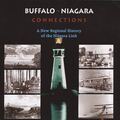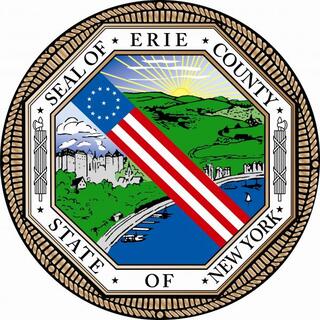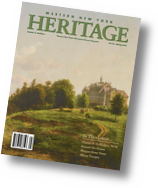The Lenox Hotel began its life in 1896-1897 as the Lenox Apartment House. See the news article here from the Buffalo Commercial of May 2, 1896 for the details.
View of the Lenox c. 1900 from Delaware Avenue intersection. The mansion at left is the "new" estate of Robert Keating Root; it fronts both North and Delaware Streets, as does the "new" estate (1898) of George L. Williams at right.
The 2004 view of the same intersection. The former Root mansion site (left) became a Howard Johnson's restaurant and, in recent years, the location of a Walgreen's Pharmacy. Out of view at right, the Williams mansion passed into the Butler family and was extensively restored by Delaware North; known as the Butler Mansion, it is used today by the University at Buffalo for conferences and special events. The neighborhood around the Lenox otherwise remains residential.
The Lenox began its life as a 24-apartment building, but was transformed in 1901 into a 48-room residential hotel that served to house many of the Pan American Exposition officials during the duration of the event. From this rooftop view is the Butler Mansion (white mansion at left). The roof at far left bottom is that of the (McKim, Mead, & White) Metcalfe House, demolished in 1980. North Street runs diagonally bottom to top above, and the Robert Keating Root house is at right. The church steeple top left is that of the Westminster Presbyterian Church.
The 2004 view of the same landscape. The Lenox was remodeled in the 1940s and the rooms total increased to nearly 150. It has remained continuously in operation, the oldest hotel in Buffalo to do so. It was sold in 2002 at foreclosure to a California investment firm.
Late 1930s, before the entrance was 'modernized.'
In 2004, Buffalo's increasingly active real estate market makes restoration of the Lenox as an apartment or condominium address a profitable project. The owners are currently looking for Buffalo investors to buy the building for conversion into 76 residential units.


















